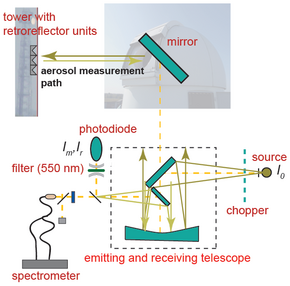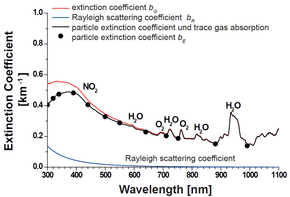
Fig. 1: Measurement principle of SAEMS: Effekt of Molecules and aerosol particles on the intensity of light.
The wavelength-dependent extinction coefficient of atmospheric particles under ambient conditions is determined with SÆMS. Atmospheric molecules and particles can scatter and/or absorb light. The light intensity is attenuated during the passage through the atmosphere (Fig. 1) depending on the wavelength.



